Breaking: Ukraine Delivers First Major Blow to Iran–Russia Drone Supply Chain by Striking Port Olya-4
- RFN- OS
- Aug 15
- 3 min read
Updated: Aug 20
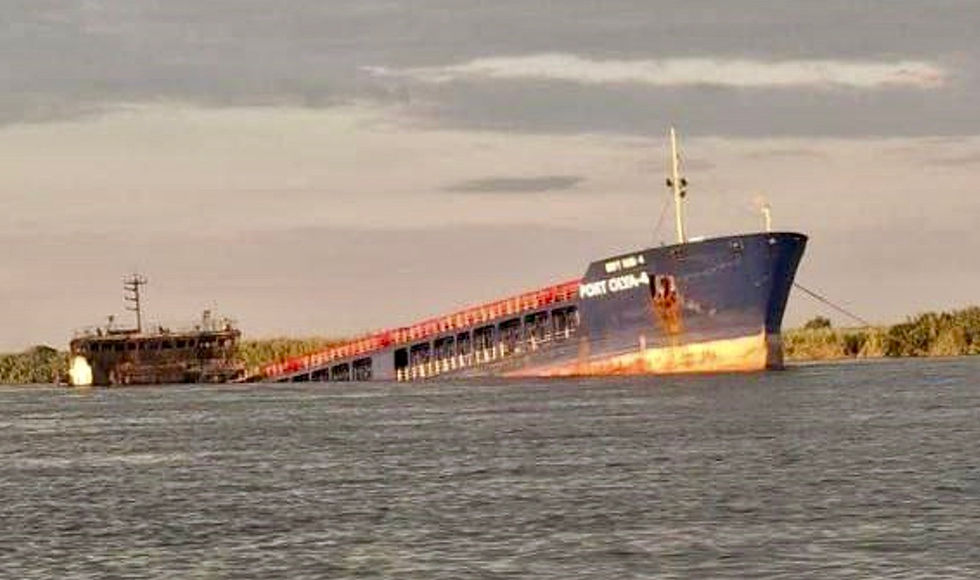
Date: August 15, 2025
Category: Maritime Intelligence | Military Logistics | Sanctions Evasion
Summary
On August 14, Ukrainian Special Operations Forces reportedly struck the Russian cargo vessel Port Olya-4 (IMO: 9481934, Flag: Russia) in the Caspian Sea near the port of Olya, Astrakhan region. The vessel was allegedly carrying munitions and drone components—specifically linked to Iran’s Shahed drone program—en route from Iran. If confirmed, this marks the first known successful Ukrainian strike on a maritime military shipment in the Caspian, and exposes a critical vulnerability in the Iran-Russia military supply chain.
Geographic Overview
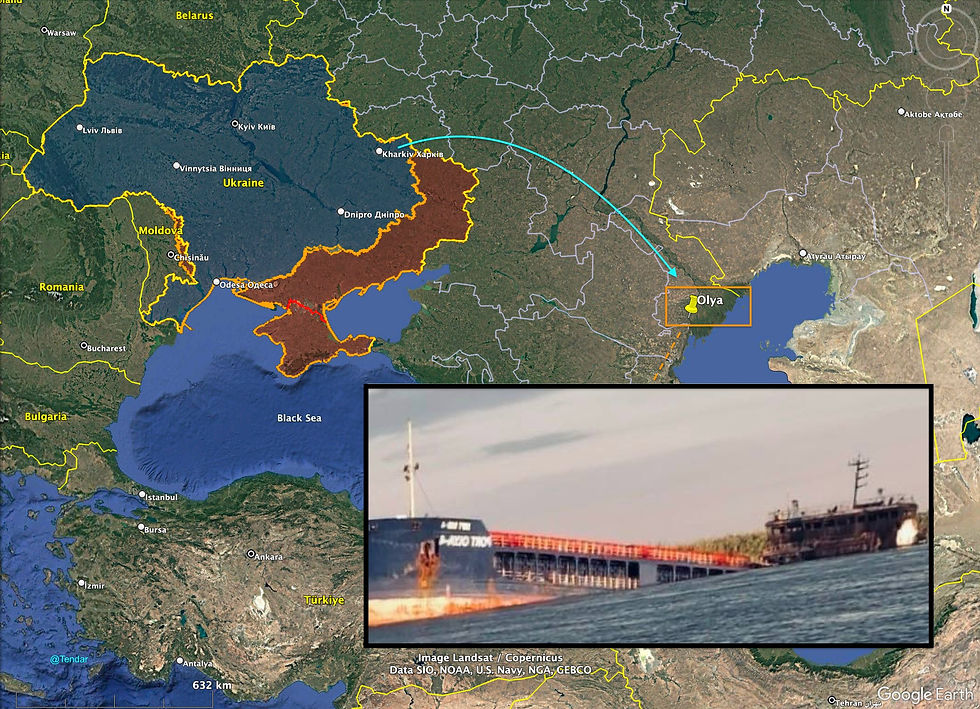
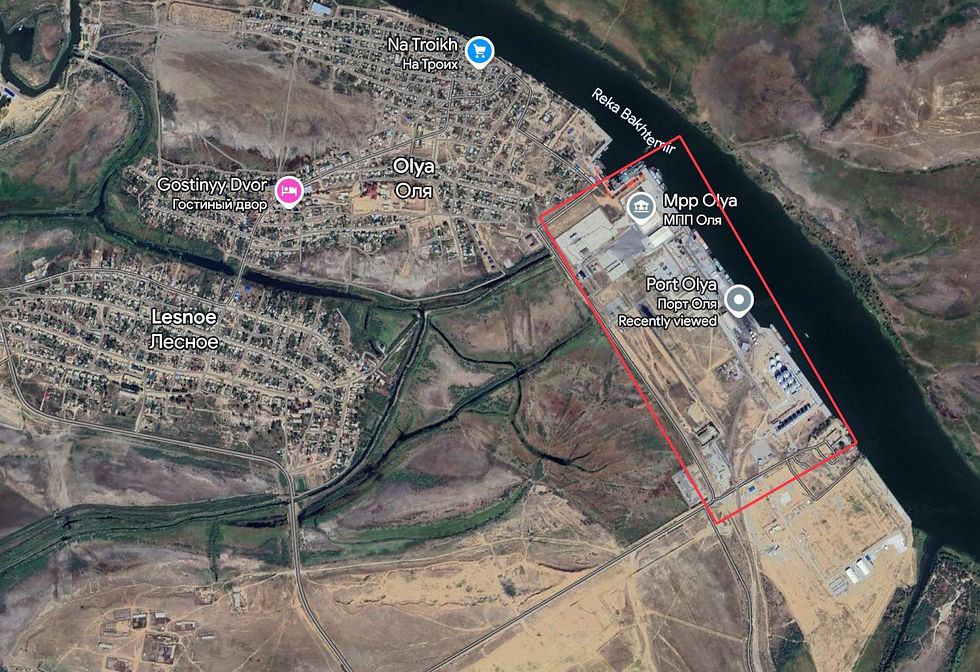
Update: Salvage ops underway at 45.5817, 47.7303 on Reka Bakhtemir, south of Astrakhan. Satellite imagery confirms recovery of Port Olya-4, sunk while transporting Iranian Shahed UAV components. Multiple support vessels on site; another large vessel staged 460m south.
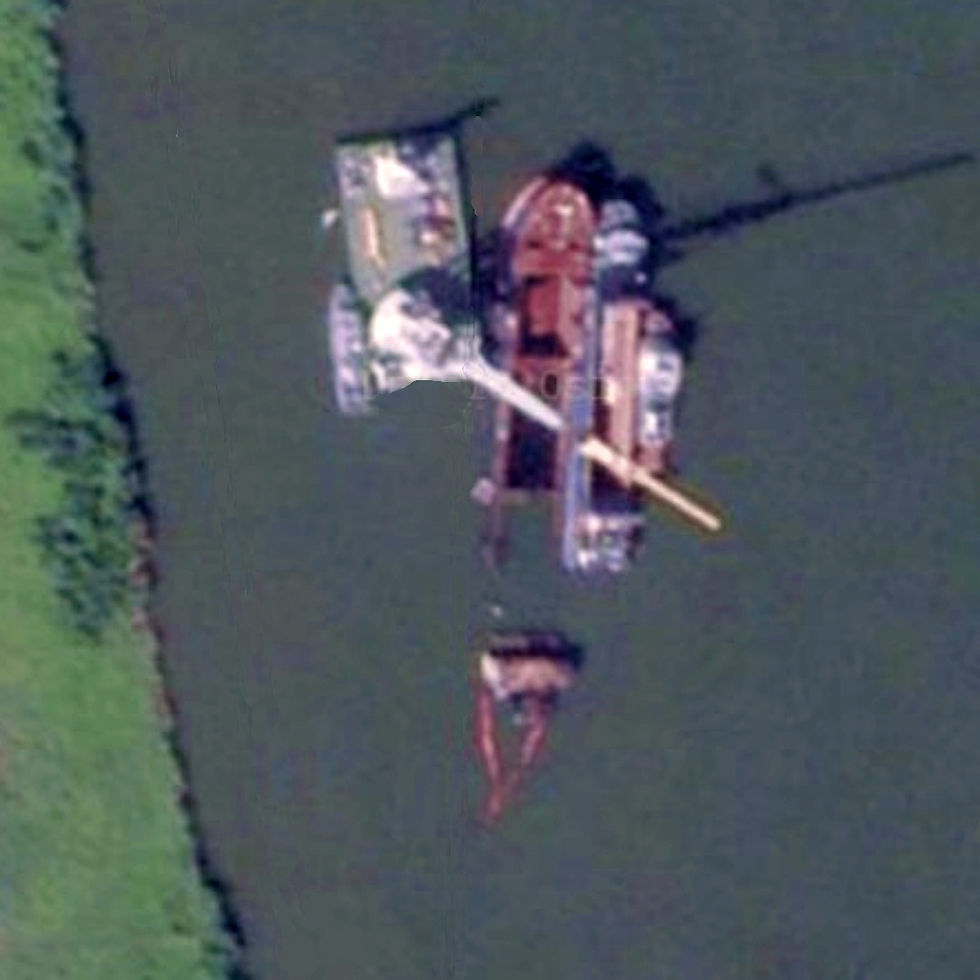
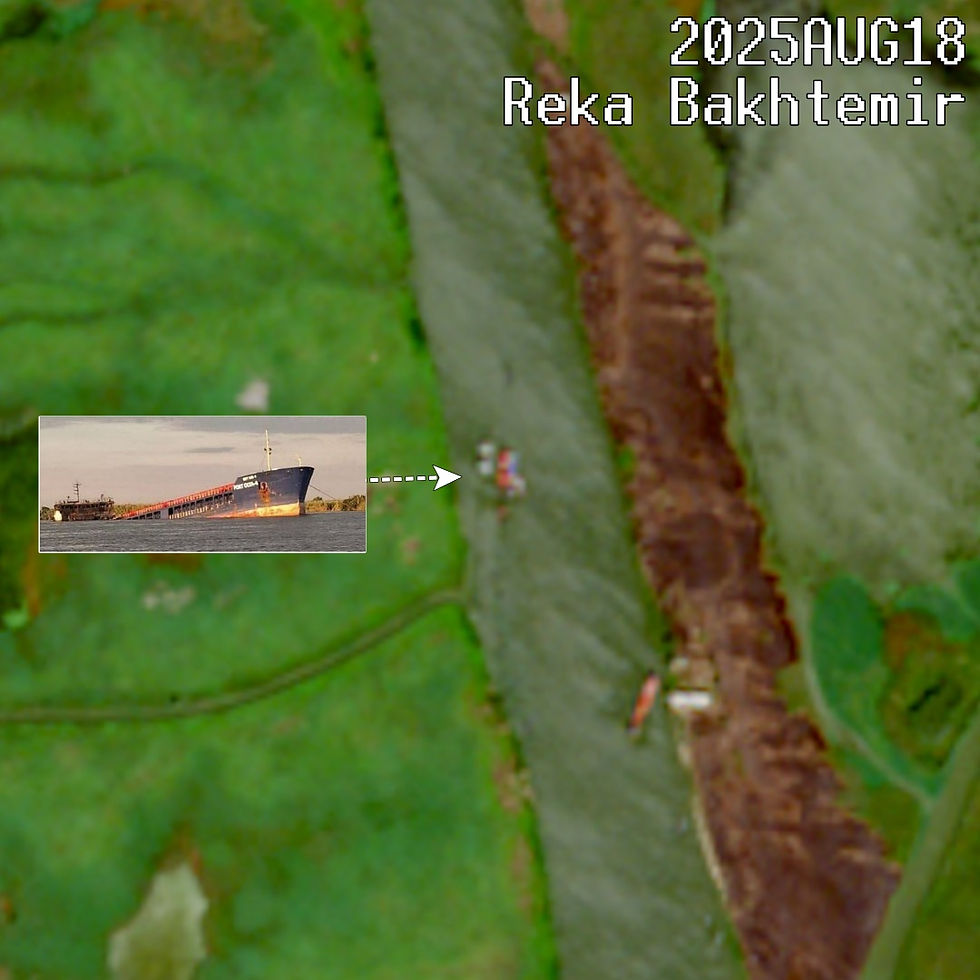
Timeline and Vessel Movement
August 1, 2025: Port Olya-4 tracked off the Iranian coast via MarineTraffic data
August 12, 2025: En route to Astrakhan, Russia
August 14, 2025: Reported strike near Port Olya; vessel partially sank
Despite official Russian statements claiming the vessel was hit by “drone fragments” and that all UAVs were “successfully intercepted,” satellite imagery and regional HUMINT suggest significant damage to the vessel’s superstructure and partial submersion near the dock.
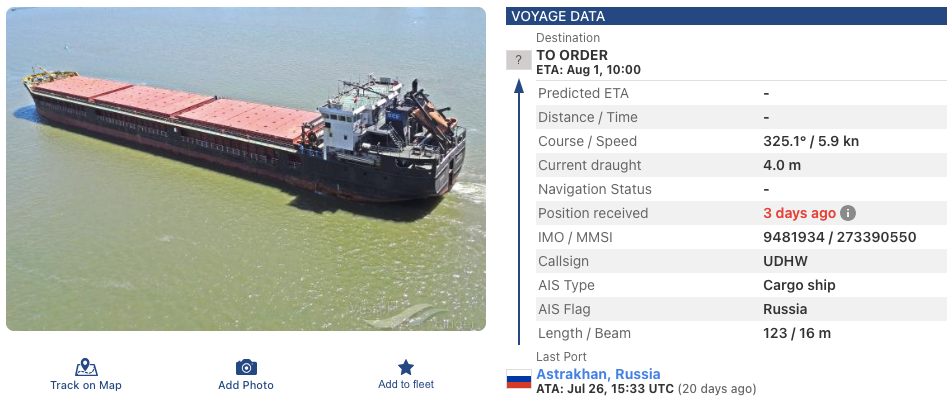
Vessel Profile: Port Olya-4
Name: Port Olya-4
Owner: MG-Flot LLC (formerly Transmorfot LLC)
Status: Sanctioned by the U.S. in September 2024
Cargo Role: Confirmed by Ukrainian intelligence to transport munitions and Shahed UAV components under covert manifest operations

The Pashayev Network and Alabuga Connection
MG-Flot LLC is owned by Jamaldin Pashayev, a sanctioned Russian businessman deeply embedded in the maritime weapons export network. His operations are centered around the commercial port of Olya, a key node in the North-South Transport Corridor—a logistics initiative heavily used for covert transfers between Iran and Russia.
Ukrainian Defense Intelligence identifies Pashayev’s network as a critical intermediary in supplying components to Alabuga JSC, the state-linked entity responsible for domestic Shahed drone assembly in Russia. Under the codename "Irlandia", Iranian-supplied materials are disguised in customs documentation and routed through both maritime and rail channels.
Sanctions Evasion via Caspian Maritime Assets
The Port Olya-4 incident brings renewed focus on the 26-vessel fleet operated by MG-Flot LLC. Among these, several vessels are suspected of transporting sensitive or dual-use cargoes, including:
Anastasiia, Askar-Sarydzha, Gasret Aliev (also used for grain theft operations)
Genrikh Gasanov, Lady R, Lady Mariia, Maia-1, Rasul Gamzatov, Port Olya-1/2/3
Valentin Emirov, Boris Kustodiev, Kompozitor Rakhmaninov
All are reportedly still active and operating within sanctioned zones or routes with minimal oversight.
North-South Corridor: Multi-Vector Supply Chain
To facilitate transfers from Iran to the Alabuga facility, Russia exploits all three branches of the North-South Transport Corridor:
Trans-Caspian Route (Primary focus of this strike)
Maritime leg via the Caspian Sea
Ports used:
Russia: Astrakhan, Olya, Makhachkala
Iran: Enzeli, Nowshahr, Amirabad
Kazakhstan: Aktau, Kuryk
Turkmenistan: Turkmenbashi
Azerbaijan: Alat
Western Route
Overland transit through Azerbaijan and Georgia
Eastern Route
Via Turkmenistan and Kazakhstan railways
Cargo is often transported in 20- or 40-foot standardized containers, each containing four to eight internal crates, later shifted to rail or truck transport under civilian manifests.
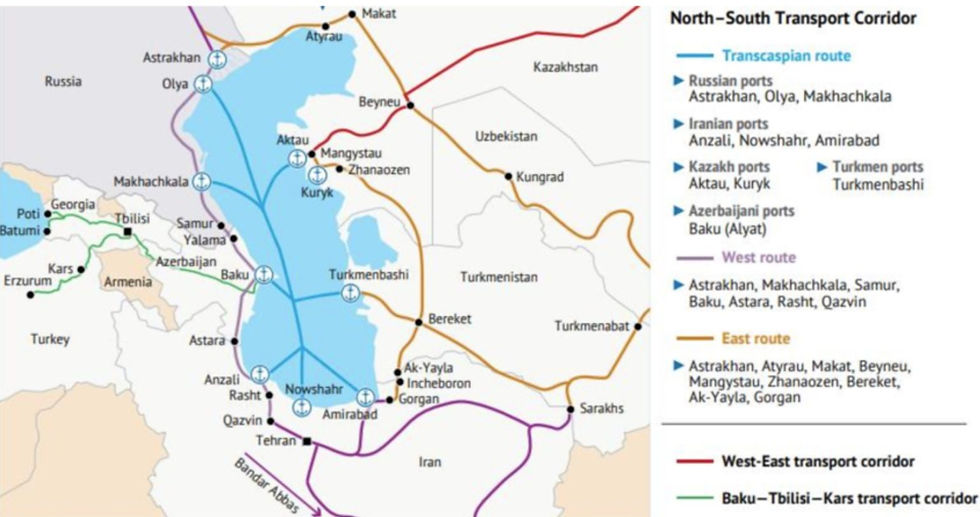
Strategic Implications
The destruction or disabling of Port Olya-4 signals a major intelligence and operational breakthrough for Ukrainian forces, potentially disrupting one of Russia’s most discreet supply corridors. Furthermore, this raises questions about:
The resilience of the Caspian route for Russian military logistics
Iran’s vulnerability as a sanctions partner and weapons supplier
Conclusion
The Port Olya-4 incident is a watershed moment in the covert maritime war surrounding Russia’s external supply chains. While confirmation is ongoing, the implications are already echoing across Moscow and Tehran’s defense sectors. The Caspian is no longer a sanctuary.
🔎 Russia Maritime Watch continues to monitor fleet movements, satellite imagery, and vessel manifests connected to MG-Flot LLC and the North-South Corridor. A full vessel watchlist and updated OSINT maps will be published in our next report.
📌 Follow @RussiaMaritimeWatch for updates and in-depth analysis.



Comments